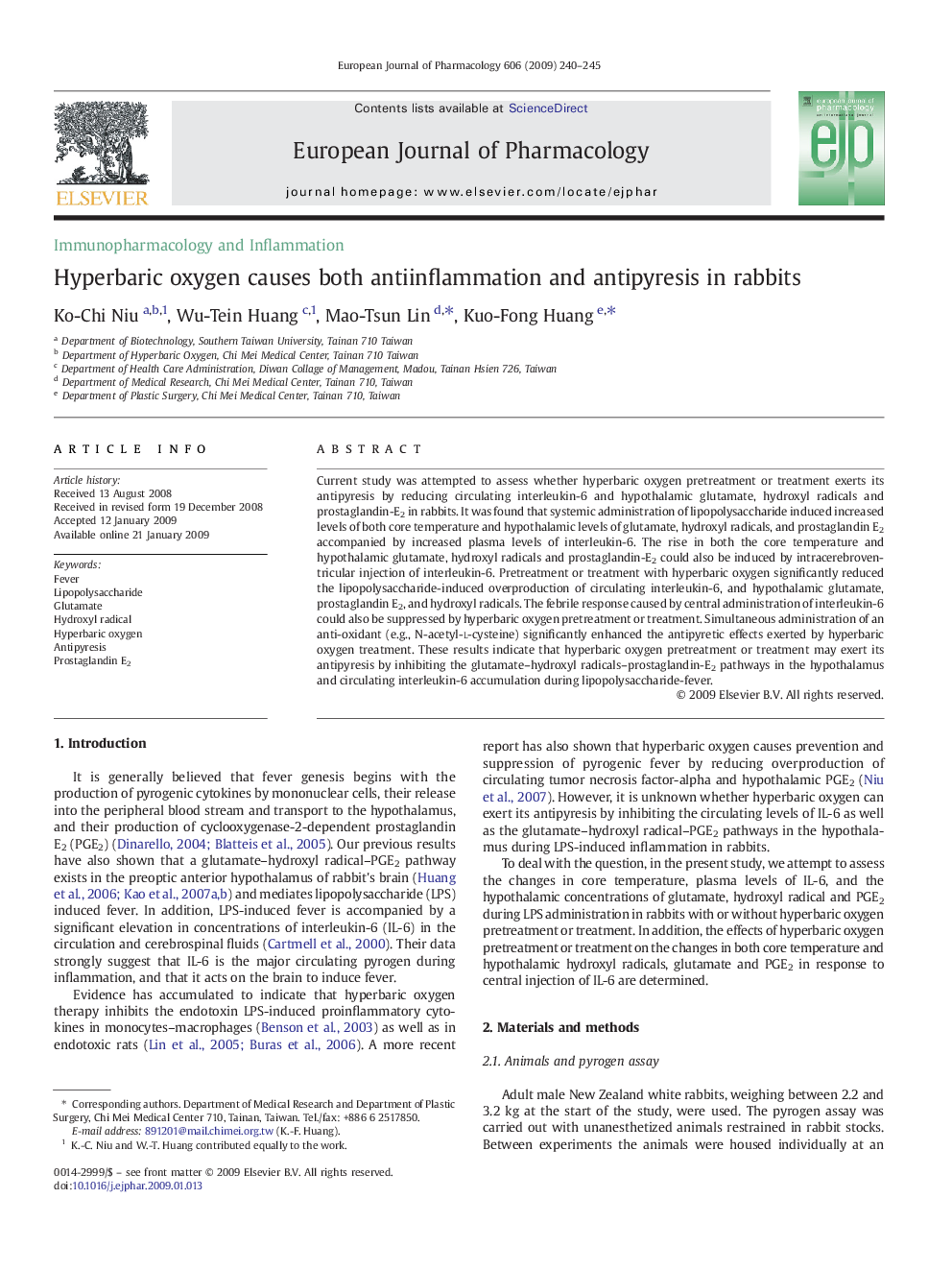| Article ID | Journal | Published Year | Pages | File Type |
|---|---|---|---|---|
| 2534416 | European Journal of Pharmacology | 2009 | 6 Pages |
Current study was attempted to assess whether hyperbaric oxygen pretreatment or treatment exerts its antipyresis by reducing circulating interleukin-6 and hypothalamic glutamate, hydroxyl radicals and prostaglandin-E2 in rabbits. It was found that systemic administration of lipopolysaccharide induced increased levels of both core temperature and hypothalamic levels of glutamate, hydroxyl radicals, and prostaglandin E2 accompanied by increased plasma levels of interleukin-6. The rise in both the core temperature and hypothalamic glutamate, hydroxyl radicals and prostaglandin-E2 could also be induced by intracerebroventricular injection of interleukin-6. Pretreatment or treatment with hyperbaric oxygen significantly reduced the lipopolysaccharide-induced overproduction of circulating interleukin-6, and hypothalamic glutamate, prostaglandin E2, and hydroxyl radicals. The febrile response caused by central administration of interleukin-6 could also be suppressed by hyperbaric oxygen pretreatment or treatment. Simultaneous administration of an anti-oxidant (e.g., N-acetyl-l-cysteine) significantly enhanced the antipyretic effects exerted by hyperbaric oxygen treatment. These results indicate that hyperbaric oxygen pretreatment or treatment may exert its antipyresis by inhibiting the glutamate–hydroxyl radicals–prostaglandin-E2 pathways in the hypothalamus and circulating interleukin-6 accumulation during lipopolysaccharide-fever.
